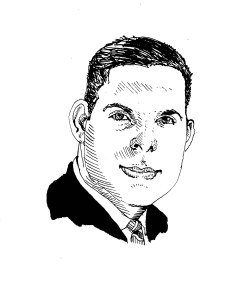The Federal Open Market Committee recommitted to its near-zero interest rate policy at its meeting in late January. Building on last summer’s announcement of a specific time horizon for its current level of accommodation, the committee pushed the expected date for tightening from next year to late 2014.
Why the change? Based on the Fed’s current assessment, economic and financial market conditions warrant a historically low Fed Funds target rate for at least another two years. The implications for commercial real estate are difficult to overstate given the critical role that low interest rates have played in the sector’s recovery.

While the immediate assurance of access to low-cost financing over such a long period is not a definitive pledge, equity market indices inched up in response. The downside of the renewed commitment is the clear signal about the growth outlook. Extraordinary monetary policy support necessarily indicates extraordinary weakness in the economy.
Given the Fed’s central role in shaping expectations, a transparent timetable for historic accommodation risks tempering near-term business investments that are crucial for sustained recovery. During the press conference that followed the Jan. 25 meeting, Chairman Bernanke conceded as much, offering that “clear and transparent central bank communications facilitate well-informed decision-making by households and businesses.” The implication is that the Fed is taking some risk in its current choice of policies.
Asked about the possibility of negative expectations that could follow from an extended commitment to low interest rates, the chairman offered that “those considerations are outweighed by the need to maintain accommodative financial conditions so that it’s attractive to firms to invest and hire, attractive for those who are eligible to buy homes.” The response reflects the constrained circumstances of current policymaking.
During periods of relatively stable economic activity, the committee has not endangered its credibility by projecting very specific rate targets so far into the future, knowing full well that conditions could later warrant a change. Chairman Bernanke has taken pains to qualify the committee’s current moves, since the explicit timetable for the target rate is not the same as the Fed’s evolving approach to interest rate targeting and related communications. Still, the practical reality of the market’s interpretative mechanisms shows that that secondary message is partly lost in translation.
The choice of unconventional policy options is motivated in part by the Fed’s exhaustion of traditional tools. With the target rate constrained by its lower boundary of 0 percent, lowering the rate further is not an option. Last February, Fed vice chair Janet Yellen made the case that a time frame for rate adjustments could result in more accommodative financial conditions, even without an adjustment in the target rate.
That outcome “would be associated with a lower trajectory for the unemployment rate … and a somewhat higher path of core inflation …”
There are differences of opinion among the committee members about the likely timetable for raising the target rate. While five of 17 believe the shift will occur in 2014, the balance is equally split between earlier and later timing. As many as six committee members believe the target rate will remain at its current level through 2016, suggesting an extraordinarily protracted period of economic fragility that contrasts with the current improvement in business and consumer confidence.
Chairman Bernanke explained that, in spite of the better economic data that have bolstered confidence in the recovery, the Fed’s assessment is less sanguine. The weight of the evidence does not yet support the view that conditions have changed materially and so, the chairman said, “I don’t think we’re ready to declare that we’ve entered a new, stronger phase at this point.”
As reflected in its central tendency projections, the Fed currently sees long-term growth in GDP between 2.3 percent and 2.6 percent. That implies a modest future for the American economy, with growth slowing by as much as a third as compared with its post-World War II average. For all its efforts, the Fed cannot steer us to stronger outcomes as easily as it we might want. Summarizing current circumstances, Dr. Bernanke’s assessment was as euphemistic as it was succinct: “We are in a difficult situation in terms of the effectiveness of policy tools.”
dsc@chandan.com
Sam Chandan, PhD, is president and chief economist of Chandan Economics and an adjunct professor at the Wharton School.


